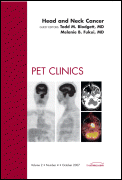
PET Clinics
Scope & Guideline
Bridging Research and Clinical Excellence in PET.
Introduction
Aims and Scopes
- Advancements in PET Imaging Techniques:
The journal highlights novel imaging techniques, including the development of dedicated PET instruments and radiotracers, which enhance diagnostic capabilities and treatment monitoring. - Theranostics in Oncology:
A significant focus is placed on theranostics, which combines therapeutic and diagnostic capabilities, particularly in the management of cancers through radiopharmaceuticals. - Clinical Applications in Cancer Management:
The journal covers the application of PET imaging in various cancer types, including prostate, breast, neuroendocrine, and lymphoma, providing insights into treatment response and disease assessment. - Artificial Intelligence Integration:
There is a consistent focus on the role of artificial intelligence in PET imaging, aimed at improving diagnostic accuracy and enhancing imaging workflows. - Molecular Imaging and Radiomics:
PET Clinics explores molecular imaging approaches and radiomics, which analyze imaging data to provide deeper insights into tumor biology and treatment responses.
Trending and Emerging
- Precision Medicine and Radiomics:
There is an increasing trend towards personalized medicine, where radiomics and advanced imaging techniques are used to tailor treatments to individual patient needs. - AI and Machine Learning in Imaging:
The integration of artificial intelligence and machine learning in PET imaging is becoming more prominent, focusing on enhancing image analysis, interpretation, and workflow efficiency. - Innovations in Theranostics:
Recent publications emphasize advancements in theranostics, particularly the use of novel radiopharmaceuticals that allow for simultaneous imaging and therapy, especially in oncology. - Clinical Trials and Regulatory Approvals:
An uptick in discussions regarding the status of clinical trials and the regulatory landscape for PET imaging technologies reflects a growing interest in bringing innovations to clinical practice. - Dedicated PET for Specific Cancers:
There is a noticeable increase in research dedicated to specific cancers, such as prostate and breast cancer, utilizing specialized PET techniques for better diagnostic and therapeutic outcomes.
Declining or Waning
- Traditional Imaging Techniques:
There is a noticeable decrease in papers focusing solely on traditional imaging techniques without the integration of PET, as newer methodologies gain prominence. - Basic Research on PET Tracers:
Research centered on the basic development of PET tracers without clinical applications appears to be waning, as the emphasis shifts towards translational research and clinical applications. - Non-Oncological Applications:
While there were initial explorations into the applications of PET in non-oncological fields, such as cardiology or neurology, recent issues show a decline in focus on these areas compared to oncology.
Similar Journals
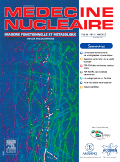
Medecine Nucleaire-Imagerie Fonctionnelle et Metabolique
Advancing the Frontiers of Nuclear Medicine.Medicine Nucleaire-Imagerie Fonctionnelle et Metabolique is a prominent journal published by Elsevier France-Editions Scientifiques Medicales Elsevier, dedicated to the specialized fields of nuclear medicine and functional imaging. With an ISSN of 0928-1258 and an E-ISSN of 1878-6820, this esteemed publication has been a crucial platform for the dissemination of research and developments in the discipline since its inception in 1993. Covering a wide array of topics within biophysics, radiological and ultrasound technology, and radiology, the journal currently holds a Q4 category ranking in these fields, reflecting its significance within the academic community. Although there are currently no open access options available for readers, the journal caters to a niche audience of researchers, professionals, and students who seek to enhance their understanding of metabolic imaging and its applications. The 2023 Scopus ranks indicate its position as an emerging source of knowledge in a competitive landscape, making it an important resource for the latest studies and innovations in nuclear medicine.

ANNALS OF NUCLEAR MEDICINE
Bridging Research and Practice in Nuclear MedicineANNALS OF NUCLEAR MEDICINE is a prominent academic journal dedicated to the field of nuclear medicine, published by Springer. With a rich publication history dating back to 1987 and continuing through 2024, this journal serves as a vital resource for researchers and practitioners interested in the latest developments in nuclear imaging, radiopharmaceuticals, and therapeutic applications. Ranked in the second quartile (Q2) for both Medicine (miscellaneous) and Radiology, Nuclear Medicine, and Imaging categories in 2023, it maintains a strong position in the academic community, with an impressive Scopus rank of #104 out of 333 in its field, placing it in the 68th percentile. The journal is not open access but offers a range of access options through institutional or individual subscriptions, ensuring that critical research findings reach a wide audience. By fostering high-quality, peer-reviewed articles, ANNALS OF NUCLEAR MEDICINE plays a crucial role in advancing the understanding and practical application of nuclear medicine techniques, making it an essential journal for professionals and students aiming to stay at the forefront of this evolving discipline.
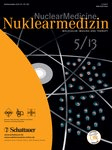
NUKLEARMEDIZIN-NUCLEAR MEDICINE
Illuminating Innovations in Radiology and Imaging.NUKLEARMEDIZIN-NUCLEAR MEDICINE is a prestigious journal published by Georg Thieme Verlag KG, focusing on pivotal advancements in the fields of Nuclear Medicine, Radiology, and Imaging. Established in 1959, this journal has served as a critical platform for disseminating innovative research, reviews, and clinical guidelines until its anticipated convergence in 2024. With an ISSN of 0029-5566 and an E-ISSN of 2567-6407, NUKLEARMEDIZIN is acknowledged in the academic community as a Q3 category journal within Medicine (miscellaneous) and Radiology, Nuclear Medicine, and Imaging as of 2023, highlighting its ongoing contribution to the interdisciplinary dialogue in healthcare. Although the journal does not currently offer open access, it remains accessible to professionals and students through various academic databases, ensuring that cutting-edge knowledge in this growing field is shared widely. Researchers interested in the latest methods and technologies in Nuclear Medicine will find NUKLEARMEDIZIN a valuable resource for enhancing their work and understanding the complexities of modern imaging modalities.

Radiology-Imaging Cancer
Exploring New Frontiers in Cancer Imaging Techniques.Radiology-Imaging Cancer is a prestigious journal published by the Radiological Society of North America (RSNA), focusing on the critical intersection of radiology, oncology, and advanced imaging techniques. This journal stands out in its field with a commendable ranking in the Q2 category for Medicine (miscellaneous) and Oncology, and an impressive Q1 ranking in Radiology, Nuclear Medicine and Imaging, according to the 2023 quartiles. With an ISSN of 2638-616X, it serves as an essential platform for the dissemination of research that contributes to the understanding and improvement of cancer diagnosis and treatment. Its comprehensive scope encompasses a range of topics, from innovative imaging modalities to clinical applications in oncology, making it a valuable resource for researchers, clinicians, and students interested in the evolving field of cancer imaging. Despite being published in the United States, the journal aims for a global reach, catering to a wide audience dedicated to advancing medical science.
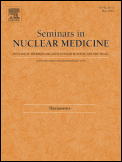
SEMINARS IN NUCLEAR MEDICINE
Elevating standards in nuclear medicine practice.Welcome to Seminars in Nuclear Medicine, a prestigious journal published by W B Saunders Co-Elsevier Inc that has been at the forefront of the field since its inception in 1971. This journal serves as a dedicated forum for researchers, healthcare professionals, and students specializing in the rapidly evolving areas of radiology and nuclear medicine. With an impressive ranking of #29 out of 333 in the Scopus category, drawing an esteemed 91st percentile, it holds a distinguished Q1 category status, highlighting its critical role in disseminating high-quality research and clinical practices. Although it does not operate as an Open Access publication, Seminars in Nuclear Medicine remains a vital resource, featuring comprehensive reviews and insightful articles that inform the medical community about the latest advancements and applications within nuclear imaging. This journal not only enhances knowledge but also encourages collaboration among professionals dedicated to improving patient outcomes through innovative nuclear medicine techniques.
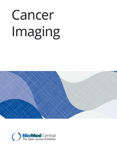
CANCER IMAGING
Pioneering Insights for Enhanced Cancer CareCANCER IMAGING, published by BMC, stands as a leading open-access journal in the realms of oncology and medical imaging, significantly contributing to the advancement of cancer research since its inception in 2000. With an impressive impact across multiple domains—most notably ranking Q1 in prestigious categories such as Medicine (miscellaneous), Oncology, and Radiology—this journal ensures high visibility and influence within the academic community. As of 2023, it is recognized in various Scopus rankings, securing top positions in the fields of Radiology, Nuclear Medicine, and Imaging, alongside Radiological and Ultrasound Technology. The journal's commitment to open-access publication, adopted in 2014, enhances accessibility for researchers, healthcare professionals, and students alike, fostering an inclusive environment for sharing critical advancements and innovative methodologies in cancer imaging. Set in the vibrant landscape of the United Kingdom, CANCER IMAGING continues to play a vital role in elucidating the complexities of cancer diagnostics and treatment, establishing itself as an essential resource for those pursuing excellence in cancer care and research.
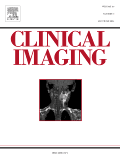
Clinical Imaging
Advancing the Future of Diagnostic ImagingClinical Imaging, published by Elsevier Science Inc, is a renowned journal dedicated to the field of radiology, nuclear medicine, and imaging. With an ISSN of 0899-7071 and an E-ISSN of 1873-4499, this esteemed publication has established its significance in advancing imaging science since its inception in 1989 and continues to make impactful contributions to the discipline through 2024. The journal holds a prestigious Q2 ranking in the category of Radiology, Nuclear Medicine, and Imaging, reflecting its critical role in bridging research and clinical practice. Currently ranked #113 out of 333 by Scopus, with a notable 66th percentile, it offers a platform for disseminating high-quality research, reviews, and case studies that inspire innovation and enhance imaging techniques. Although it primarily functions as a subscription-based journal, it remains dedicated to accessibility and the dissemination of pivotal findings that inform both academia and clinical settings. Clinical Imaging is essential for researchers, professionals, and students alike, offering insights that shape the future of diagnostic imaging.
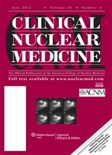
CLINICAL NUCLEAR MEDICINE
Advancing the Future of Nuclear MedicineCLINICAL NUCLEAR MEDICINE is a premier journal dedicated to the field of nuclear medicine, published by Lippincott Williams & Wilkins. With a history of excellence since its inception in 1978, the journal serves as a vital resource for researchers, healthcare professionals, and students seeking to deepen their understanding of this rapidly evolving discipline. The journal holds a commendable Q2 ranking in both Medicine (miscellaneous) and Radiology, Nuclear Medicine and Imaging, reflecting its significant impact on advancing clinical practices and research. While currently not offered as an open-access publication, CLINICAL NUCLEAR MEDICINE ensures rigorous peer review and high-quality publications, contributing to the broad dissemination of cutting-edge studies and reviews. With its comprehensive scope encompassing both diagnostic and therapeutic nuclear medicine applications, researchers around the globe turn to this journal to stay informed and inspire innovations in patient care for the years leading up to 2024 and beyond.

American Journal of Nuclear Medicine and Molecular Imaging
Dedicated to the Evolution of Nuclear Medicine and Imaging ScienceThe American Journal of Nuclear Medicine and Molecular Imaging (ISSN: 2160-8407), published by E-CENTURY PUBLISHING CORP, is a distinguished platform for the dissemination of cutting-edge research in the fields of nuclear medicine and molecular imaging. With a commitment to advancing scientific inquiry and clinical applications, this journal serves as a vital resource for researchers, clinicians, and students dedicated to exploring innovative imaging modalities, radiopharmaceuticals, and their applications in diagnosing and treating various medical conditions. Although currently not available as an open-access journal, this publication plays a crucial role in fostering academic dialogue and collaboration within the medical community. Its diverse range of topics and expert contributions underscore its impact in bridging the gap between research findings and clinical practice, making it an essential read for anyone interested in the rapidly evolving landscape of nuclear medicine and imaging technologies.

Tomography
Elevating the standards of medical imaging research.Tomography is an esteemed peer-reviewed journal published by MDPI, focusing on a broad spectrum of topics related to medical imaging and diagnostics. Launched in 2015, this Open Access journal serves as a vital platform for researchers, professionals, and students in the fields of medicine, radiology, nuclear medicine, and imaging. With an impressive impact factor reflecting its relevance, the journal has achieved a quartile ranking of Q2 in both Medicine (Miscellaneous) and Radiology, Nuclear Medicine, and Imaging as of 2023. Renowned for disseminating high-quality research, Tomography welcomes original research articles, reviews, and technical notes, fostering innovation and collaboration within the scientific community. Housed in Basel, Switzerland, the journal aims to bridge the gap between fundamental research and clinical application, appealing to a diverse readership eager to advance the field of medical imaging.